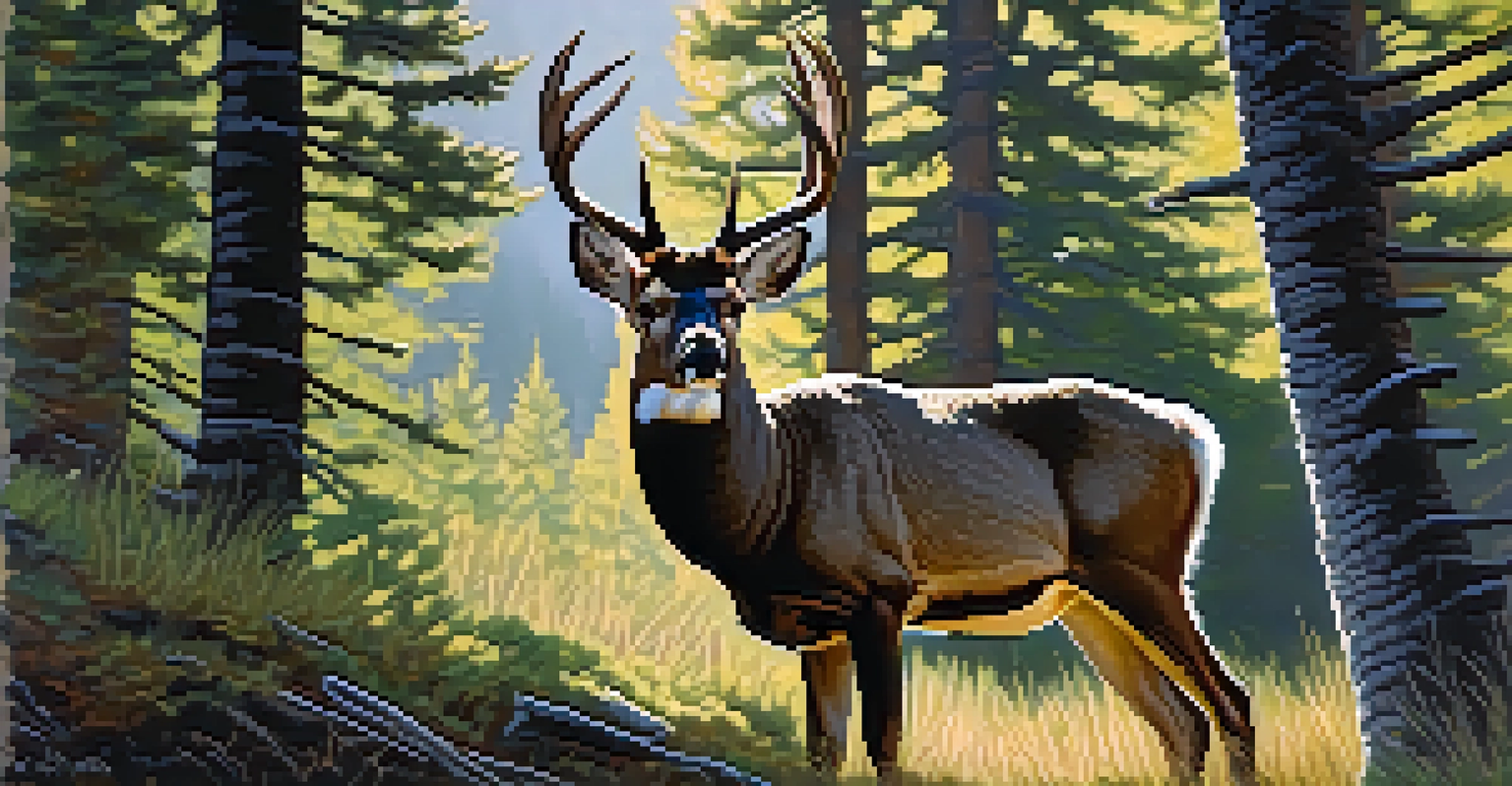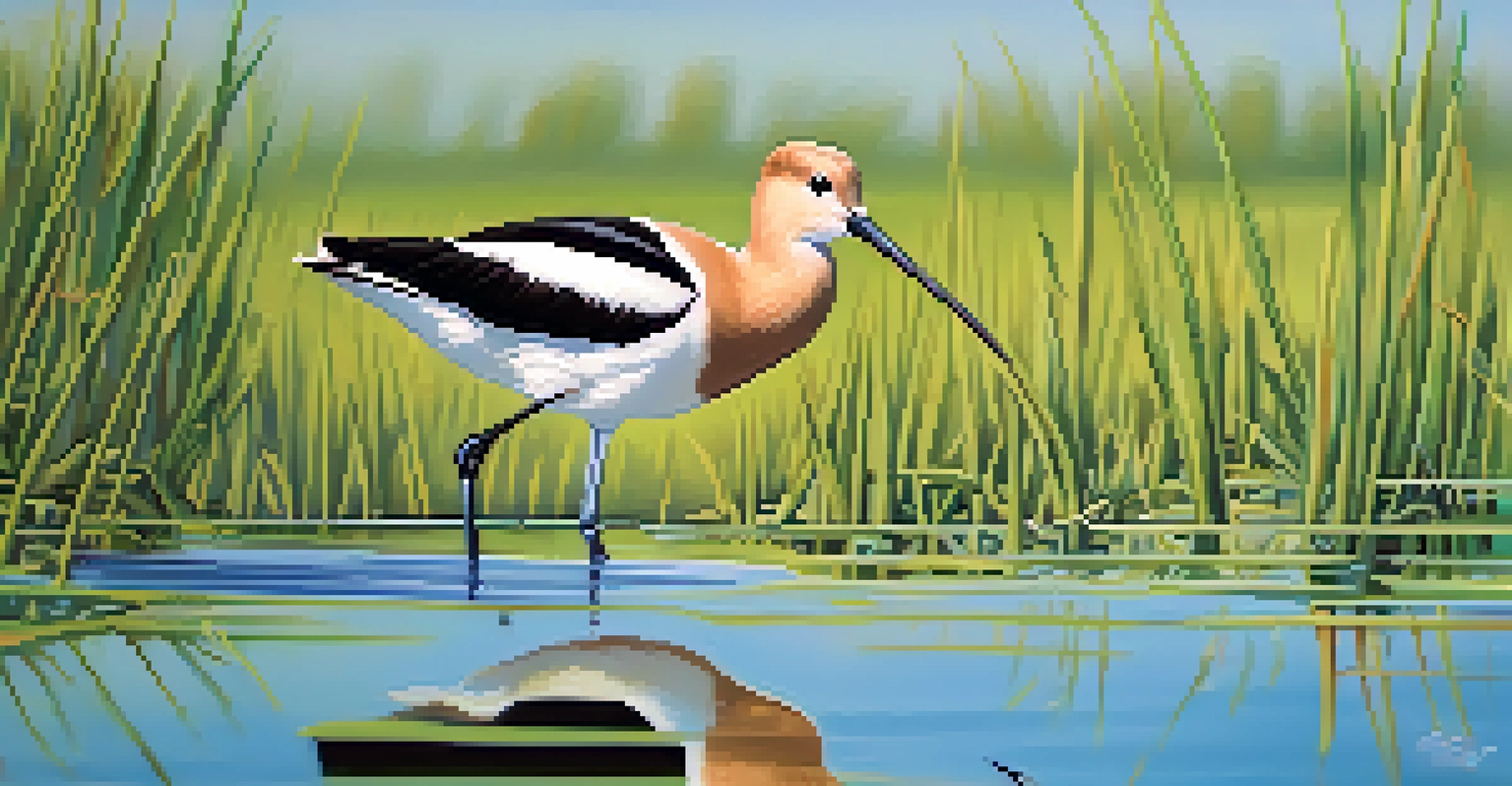Exploring Utah's Unique Wildlife: Species and Habitats Overview

Introduction to Utah's Diverse Ecosystems
Utah is a treasure trove of unique ecosystems, ranging from arid deserts to lush forests. Each habitat supports a rich variety of wildlife that thrives in these distinct environments. Understanding these ecosystems is crucial for appreciating the intricate balance of nature in the Beehive State.
In every walk with nature one receives far more than he seeks.
The state's varied geography, including mountains, canyons, and wetlands, creates microhabitats that cater to different species. For instance, the Great Salt Lake provides a vital stopover for migratory birds, while the Wasatch Mountains are home to diverse mammal populations. This diversity makes Utah a fascinating place for wildlife enthusiasts and nature lovers alike.
By exploring these ecosystems, we can gain insights into how wildlife adapts to their surroundings. This adaptation is not only essential for their survival but also for maintaining the ecological balance that sustains other species, including humans.
Iconic Mammals of Utah: An Overview
Utah is home to a variety of iconic mammals, each adapted to thrive in their specific habitats. The mule deer, for example, roams the forests and mountains, while the desert bighorn sheep is perfectly suited for the rocky terrains of the state's desert regions. These mammals are not only important for biodiversity but also for the cultural heritage of the region.

Another fascinating mammal is the American black bear, found in the forested areas of Utah. These bears are known for their intelligence and adaptability, making them a symbol of the state's wilderness. Observing such magnificent creatures in their natural habitat can be a breathtaking experience.
Utah's Ecosystems Are Diverse
Utah's varied landscapes, from deserts to wetlands, support a rich array of wildlife and unique habitats.
However, conservation efforts are crucial to protect these mammals from habitat loss and human interference. By supporting wildlife preservation initiatives, we can ensure that future generations will also have the opportunity to witness Utah's remarkable mammal species.
Birdwatching in Utah: A Bird Lover's Paradise
Utah's diverse landscapes make it a hotspot for birdwatching enthusiasts. From the wetlands of Bear River Migratory Bird Refuge to the red rock canyons of Zion National Park, the state offers a range of habitats that attract various bird species. Whether you’re an avid birdwatcher or a casual observer, Utah's avian life is sure to impress.
The clearest way into the Universe is through a forest wilderness.
Among the remarkable birds you can spot are the American avocet and the great blue heron. These birds thrive in Utah's wetlands, showcasing stunning plumage and fascinating behaviors. The thrill of spotting a rare bird can be a rewarding experience for any nature lover.
Seasonal migrations also bring a diverse array of species to Utah, making it a year-round birdwatching destination. By participating in local birdwatching events or visiting designated hotspots, you can connect with fellow enthusiasts while enjoying the beauty of Utah's wildlife.
Reptiles and Amphibians: Utah's Cold-Blooded Wonders
While mammals and birds often steal the spotlight, Utah's reptiles and amphibians are equally captivating. The state boasts a variety of species, including rattlesnakes, lizards, and even the elusive tiger salamander. These cold-blooded creatures play vital roles in their ecosystems, controlling insect populations and serving as prey for larger animals.
One of the most intriguing reptiles is the Gila monster, a venomous lizard native to Utah's desert regions. Its bright coloration serves as a warning to potential predators. Learning about these fascinating animals can help dispel myths and foster a greater appreciation for their role in the ecosystem.
Importance of Wildlife Conservation
Conservation efforts are crucial to protect Utah's wildlife from threats like habitat loss and climate change.
Conservation efforts are essential for protecting these species, especially as their habitats face threats from urban development and climate change. By advocating for responsible land use and habitat preservation, we can help safeguard Utah's unique reptiles and amphibians for generations to come.
Utah's Unique Plant Life: A Foundation for Wildlife
Plants are the backbone of Utah's ecosystems, providing food and shelter for countless species. The state's diverse flora ranges from desert succulents to towering conifers, each adapted to thrive in its environment. Understanding these plants is essential for recognizing the intricate relationships within Utah's wildlife.
For example, the sagebrush steppe is home to a variety of wildlife, including the sage-grouse, which relies on this habitat for food and nesting. The unique adaptations of these plants not only support local fauna but also contribute to the overall health of the ecosystem.
By promoting native plants and responsible land management practices, we can ensure that Utah's wildlife continues to thrive. Supporting local conservation initiatives can also foster a deeper connection with the natural world, encouraging a sense of stewardship for our environment.
The Role of Conservation in Protecting Utah's Wildlife
Conservation plays a pivotal role in safeguarding Utah's unique wildlife and habitats. With increasing development and climate change, many species face threats that could jeopardize their survival. Efforts to protect these animals and their environments are crucial for maintaining the state's biodiversity.
Organizations and community groups are actively working to restore habitats, promote sustainable practices, and educate the public about the importance of wildlife conservation. These initiatives not only benefit the animals but also enhance the quality of life for residents and visitors alike.
Birdwatching Opportunities Abound
Utah is a prime destination for birdwatchers, offering diverse habitats that attract numerous bird species year-round.
By getting involved in local conservation efforts, such as volunteering for habitat restoration projects or participating in educational programs, individuals can make a significant impact. Together, we can ensure that Utah's rich wildlife heritage endures for future generations to enjoy.
Experiencing Utah's Wildlife: Tips for Nature Enthusiasts
Experiencing Utah's wildlife firsthand can be a thrilling adventure, but it's essential to do so responsibly. Always prioritize safety and respect for the animals and their habitats. Whether you're hiking, birdwatching, or simply exploring, being mindful of your surroundings can enhance your experience.
One important tip is to maintain a safe distance from wildlife. Observing animals from afar not only protects them but also allows you to appreciate their natural behaviors. Bringing binoculars or a camera can help you capture those unforgettable moments without disturbing the animals.

Additionally, consider visiting wildlife reserves or participating in guided tours with knowledgeable experts. These experiences provide valuable insights into Utah's ecosystems while ensuring that your adventures contribute to conservation efforts. With the right approach, exploring Utah's wildlife can be both enjoyable and educational.